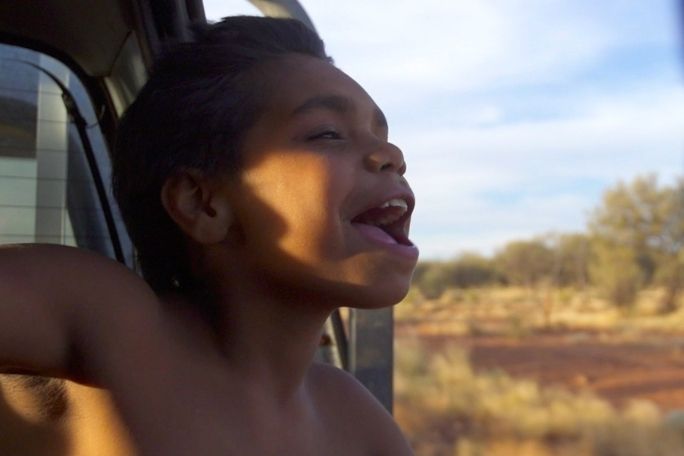Lesson summary
In this lesson, students will investigate the way language is portrayed in the feature documentary, In My Blood It Runs. They will explore how language can be a source of cultural identity and political power. Using bilingualism as a context within the film, students will examine the interactions between different languages and cultures and how these create meaning in the film. They will then relate these themes back to the Australian context, to explore how language can have meaning and power in the community.
Learning intentions:
Students understand...
- how language is connected to place, culture and identity
- the context and significance of Aboriginal and Torres Strait Islander languages
- how languages change and borrow from each other
- how language can be used for inclusion and exclusion
Success criteria:
Students can...
- identify words that have cultural significance in different languages
- compare and contrast scenes within the same film to ascertain meaning
- create visual metaphors to represent complex ideas
- analyse the language used in official documentation and draw conclusions about its usefulness for various audiences
Lesson guides and printables
Lesson details
Curriculum mapping
Australian curriculum content descriptions:
Year 9 English:
- Understand that Standard Australian English is a living language within which the creation and loss of words and the evolution of usage is ongoing (ACELA1550)
- Understand that roles and relationships are developed and challenged through language and interpersonal skills (ACELA1551)
- Interpret and compare how representations of people and culture in literary texts are drawn from different historical, social and cultural contexts (ACELT1633)
Year 10 English:
- Understand that Standard Australian English in its spoken and written forms has a history of evolution and change and continues to evolve (ACELA1563)
- Understand how language use can have inclusive and exclusive social effects, and can empower or disempower people (ACELA1564)
- Compare and evaluate a range of representations of individuals and groups in different historical, social and cultural contexts (ACELT1639)
Syllabus outcomes: EN5-3B, EN5-5C, EN5-8D.
General capabilities: Literacy.
Cross-curriculum priority: Aboriginal and Torres Strait Islander Histories and Cultures (OI.4, OI.8)
Relevant parts of Year 9 & 10 achievement standards: Students interpret, create, evaluate, discuss and perform a wide range of literary texts in which the primary purpose is aesthetic, as well as texts designed to inform and persuade. These include various types of media texts, including newspapers, film and digital texts, fiction, non-fiction, poetry, dramatic performances and multimodal texts, with themes and issues involving levels of abstraction, higher-order reasoning and intertextual references. Students develop a critical understanding of contemporary media and the differences between media texts.
This lesson is part of the wider unit of work In My Blood It Runs
Time required: 80 mins
Level of teacher scaffolding: Medium – facilitate class discussion based themes and events in the film
Resources required
- Device with internet access capable of displaying videos for the whole class
- Sets of dominoes or packs of cards
- Student Worksheet
Skills
This lesson is designed to build students’ competencies in the following skills:
- Critical thinking
- Cultural understanding
Additional info
We recommend that before you teach this lesson, you have taught one or both of the first lessons in the sequence (Identity and Diverse Perspectives), accessed the free professional learning resource, which has been co-developed by Reconciliation Australia’s Narragunnawali team, and watched the film with your class.
Cool Australia would like to thank the In My Blood It Runs Advisory Committee who supported the writing of this resource. Special thanks to Alanna Raymond, Tessa Keenan, Stephanie Woerde, Esma Livermore and Julie Bover from Reconciliation Australia, Alex Shain from Shark Island, Maria Katsabanis from Australian Human Rights Commission, Renee Phillips from National Indigenous Youth Education Coalition, and Keren Shlezinger.


Welcome back!
Don't have an account yet?
Log in with:
By signing up to Cool.org you consent and agree to Cool's privacy policy to
store, manage and process your personal information. To read more, please see
our privacy policy here(Opens in new tab).
Create your free Cool.org account.
Many of our resources are free, with an option to upgrade to Cool+ for premium content.
Already have an account?
Sign up with:
By signing up to Cool.org you consent and agree to Cool's privacy policy to
store, manage and process your personal information. To read more, please see
our privacy policy here(Opens in new tab).